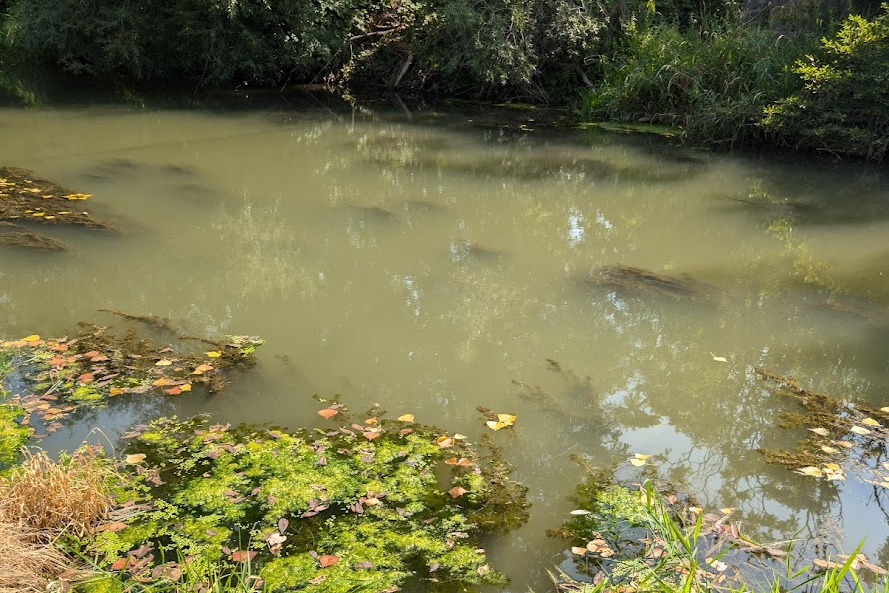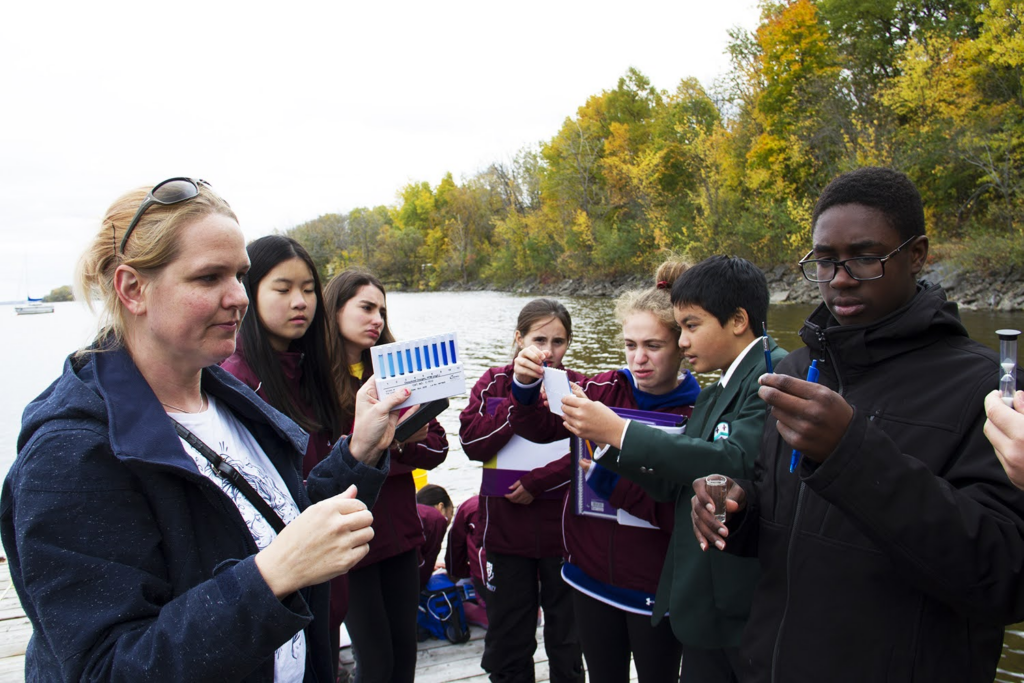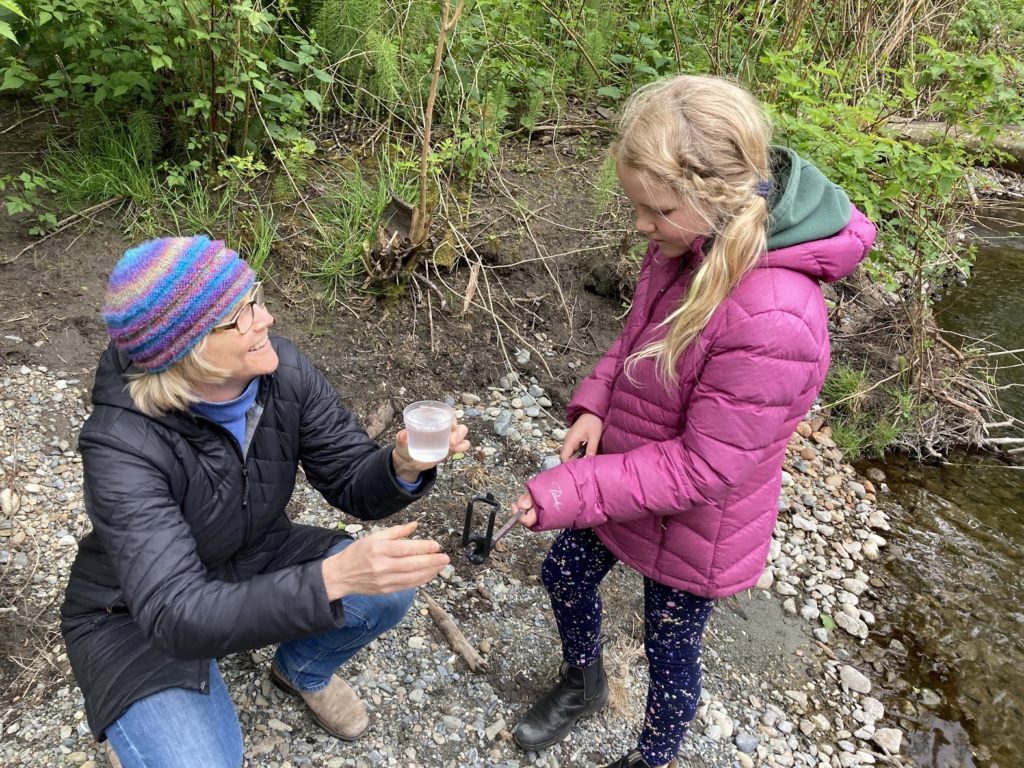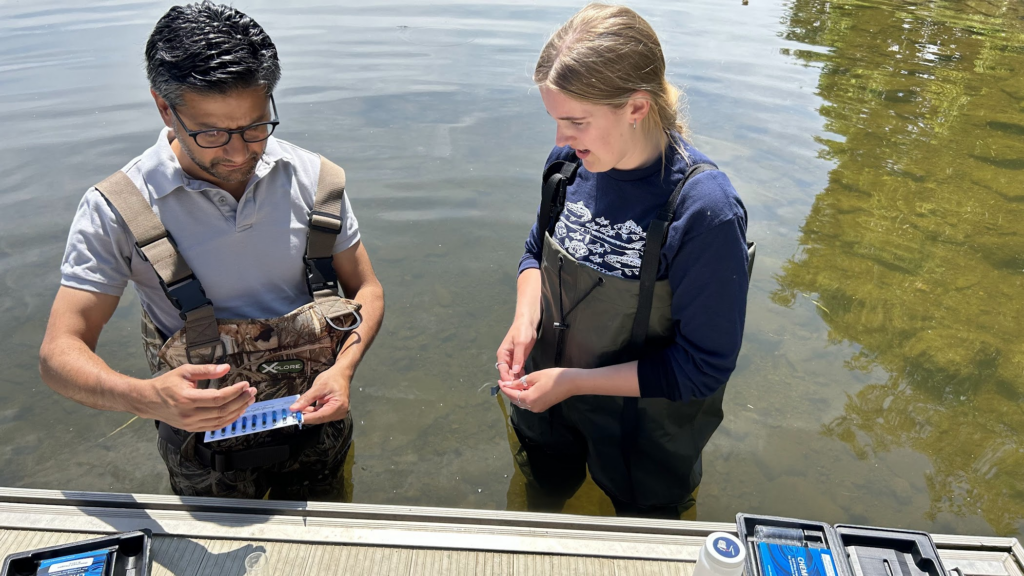City of Surrey Heat Wave Water Quality Campaign!
Join the Heat Stress Water Watch! Help Monitor the health of Surrey's creeks this summer to make sure that creeks stay healthy for salmon to return in the fall.
Have you ever walked by a creek during the summer and noticed the water is low, slow, or has a green film on the surface? These are often signs of extended periods of high temperatures, such as heat waves, which lead to low flow and reduced water quality. Over the past decade, our summers have become longer and hotter, which means less water is entering our creeks during the warmer months. This can cause creeks to run dry, which is bad news for the fish and aquatic life that depend on them.

Many creeks across Surrey are salmon-bearing streams where salmon return each fall to lay their eggs. Some of them might even run through your neighbourhood! For salmon to keep returning year after year, these creeks need to stay clean, cool, and free of pollution. During summer months, rising temperatures and lower rainfall can lead to warmer water and more concentrated pollutants. To keep our streams healthy, we need to collect water samples, test for pollutants, and monitor temperature changes throughout the year.
Surrey is a big place, and we have a lot of ground to cover. If you’re interested in helping protect salmon habitat, we’re focusing on two priority watersheds where you can take part in water quality monitoring this summer.
Cougar Creek Watershed
The Cougar Creek watershed spans municipal borders and covers a total area of 1,192 hectares, with 394.6 hectares in Surrey and 797.4 hectares in Delta. The creek has a total length of 3.045 kilometres and includes three segments and several ponds within Surrey, stretching 9.1 kilometres before flowing into the Fraser River.
In earlier decades, the watershed was largely rural and undeveloped, and Cougar Creek was well known as a healthy salmon-bearing stream. Since the 1970s, the area has transformed into a vibrant residential neighbourhood. With this development came big changes to land cover, vegetation, and the shape of the creek itself. These changes have impacted water and habitat quality. Cougar Creek still supports spawning salmon in its lower reaches, but it’s under increasing pressure from both development and climate change. That’s why monitoring water quality here is more important than ever.
Hyland Creek Watershed
The Hyland Creek watershed spans 1,387 hectares and includes several tributaries that feed into the main creek. Hyland Creek itself is 6 kilometres long and eventually flows into the Serpentine River to the east. Tributaries such as Henry Bose Creek and Archibald Creek still provide healthy habitat for salmon and other urban wildlife.
This watershed is home to several urban parks that act as important green spaces for both people and nature. Each fall, salmon return to specific locations—like Hyland Creek Park—to spawn. But just like other urban creeks, this system is under stress from growing development and hotter summers. These pressures increase erosion, reduce flow, and raise water temperatures. Regular water testing is essential to guide local restoration and conservation efforts.
Questions?
If you have any questions or would like to learn more how you can get involved, please contact us!
Send an emailAbout us
Water Rangers is a Canadian non-profit dedicated to empowering communities to steward local waters by providing accessible, easy-to-use water quality monitoring test kits and hosting an open-source data platform. Our kits and platform are used by community monitoring groups, educators, and conservation authorities to better understand and protect local water bodies.


